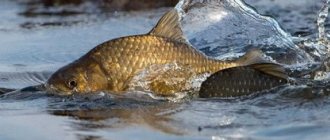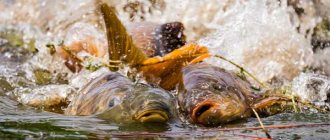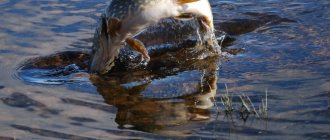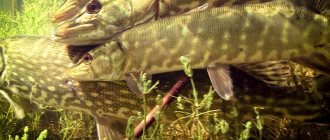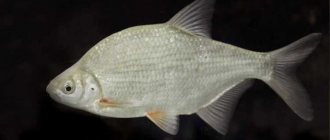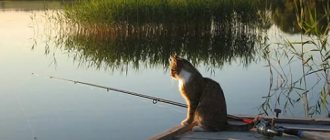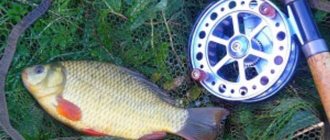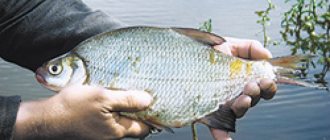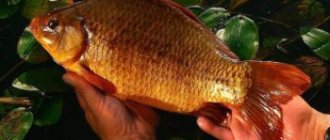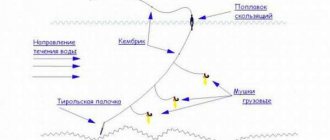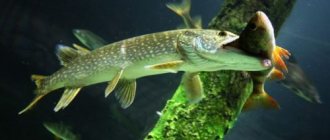The popularity of fishing has been known to everyone since time immemorial; before it was a trade, a way to get food. Today, fishing has become more of a hobby or passion for both men and women.
For many experienced fishermen, this interesting and exciting process brings considerable income.
To develop the quantity of valuable commercial fish and protect spawning, an official decree introduced a restriction on fishing during the spawning period . For a certain region in the state, depending on climatic conditions, there is a ban on fishing during a certain period.
Spawning ban
This restriction allows the fish to reproduce unhindered and the fry to develop, because the better this difficult time for the fish passes, the more young there will be.
Fish protection consists mainly of imposing a categorical ban on fishing, during clearly established periods, in certain spawning areas.
Basically, it provides for a spawning ban from the beginning of April until the end of May . The spawning period itself lasts at least 40 days.
It is worth noting that in some particularly important (strategically) reservoirs there are very strict restrictions; the ban on catching fish has been in effect for quite a long time. Spawning fishing restrictions here are in effect from early April to mid-July.
The State Service for the Protection of Reservoirs and Ichthyofauna provides areas where fishing may be allowed even during the period of the spawning ban. Every experienced fisherman is notified in advance about those places where fishing is allowed.
The period of spawning restrictions may vary not only by region, but even within the same region, in different areas, and in different bodies of water, different rules and restrictions on fishing may apply. This is due to different species of fish living in the same area, and even in the same body of water.
Types of prohibition
- Fishing with the onset of cold weather ( special emphasis is placed on valuable species of fish ).
- Fishing for individuals during spawning.
- Fishing from the shore.
- Fishing from the reeds along the shoreline.
- The use of net structures, electric fishing rods, and other special traps.
- Use of gear with more than 10 hooks.
- Measures to persecute ichthyofauna with toxic agents.
- Fishing from a boat.
- “Hunting” for rare individuals without permission.
- Fishing near locks, hydroelectric dams, etc.
Age and breeding season of fish
Sexual maturation of fish lasts for different times, and females reach sexual maturity at different ages. For example, a beluga can only reproduce after reaching 15 years of age, but there are also species that begin to spawn the very next year after birth. In most freshwater fish, spawning occurs for the first time only after reaching 3 years of age. As a rule, during this period, some species become more brightly colored, while others develop additional elements of breeding clothing, such as spines or growths.
Which fishing line is best for a float fishing rod - consider all the characteristics and types
The spawning period begins approximately in the middle of spring and continues until the summer season, and at the beginning of the cycle, sexually mature individuals develop a brutal appetite, which in the language of fishermen is called zhor. During this period, males and females who have huddled together in a flock and completely lost control over themselves swallow everything, including various fishing baits, especially preferring earthworms and maggots.
Lucky fishermen at such a time, taking into account the timing of the onset of sexual arousal in fish of a certain species, can catch a record number of them in a matter of hours.
In early spring, somewhere from mid-April to its end, pike begin to spawn. Behind it, with some separation, from about the middle to the end of May, ide and perch spawn. After them, pike perch, bream and roach go to spawn and continue throughout June. Carp, crucian carp, tench and silver bream, as well as most other river and lake freshwater fish begin to reproduce in late spring and early summer.
Salmon, such as trout and other fish, reproduce in late autumn, until the beginning of winter. And the spawning calendar is completed by burbot and some other species, for example, vendace, which manage to lay eggs under the ice in the coldest time of the year during frosts. The burbots gathered in a school swim against the current until they reach fast and shallow riffles, where they begin to throw a large amount of very small and sticky eggs into the water.
A fairly large female burbot can lay up to 1 million eggs, while a small young individual lays up to 200 thousand of them. Vendace lays eggs much less, from 2 to 5 thousand eggs, while most of them are eaten by stickleback, which has multiplied excessively recently time.
Rules for choosing an inexpensive and reliable motor for a PVC boat
Features of the spawning period
The features of the spawning ban include some features and exceptions to the rules.
So, in some canals and reservoirs, it is allowed to fish at any time, despite the restrictions. This is due to the fact that fish are found in large quantities in this area.
This situation may occur:
- Near the sluice water blocks;
- Near heating and power plants;
- On underwater channels of power plants;
- Near highways;
- In reservoirs larger than 500 meters above or below dams.
It is also worth knowing that a number of citizens whose social status allows them to fish on preferential terms eat; these include teenagers under 16 years of age, disabled people and combatants, etc.
The above-mentioned citizens have the right to fish without specialized entrance tickets to fisheries that are part of the guild of hunters and fishermen. Others who like to sit on the shore of a pond with a fishing rod will need entrance tickets (permits). It is worth considering that in most cases they are paid.
What date does spawning end?
Despite exactly when the spawning ban will come into force, depending on the region and the reservoir, the end of the fishing restrictions ends on June 10 , when the young animals have already grown sufficiently and become stronger.
What date does spawning start?
Fish spawning begins approximately on April 24 , therefore, from this moment, based on the territorial location of the reservoir, a spawning ban comes into force.
Where does it spawn?
In the southern regions of the country, the first wave of spawning usually begins closer to mid-May. In mid-latitudes, cyprinids begin to spawn in late May - early June, while crucian carp in the northern regions spawn at the end of June, or even in mid-July if the summer is cold and cloudy. In addition, the process also depends on the amount of food in the reservoir.
For spawning, carp choose familiar, quiet and shallow places near abundant accumulations of aquatic plants. These are, as a rule, reservoirs with stagnant water or minimal current and a loose, muddy bottom.
Find out how to deliciously cook crucian carp on the grill.
Legislative documents
Such restrictions from the state are regulated by the Federal Fisheries Agency and are included in the Federal Law “On Fisheries and Conservation of Aquatic Biological Resources” . Also, restrictions and conditions for fishing are determined for each region and reservoir by the Fishing Rules.
Specialized documents and regulations aimed at protecting endangered species are constantly updated and supplemented.
Employees of the relevant ministry are systematically developing new rules and creating updated conditions for the process itself, depending on the current situation with the ichthyofauna.
All current rules are quite clear and clearly describe the times and dates of prohibitions and the places, terrain, and reservoirs in which fishing can be carried out.
Tips from Velesovik
Many people have heard that the spawning period of crucian carp coincides with the flowering of viburnum. We hasten to inform you that the popular belief is not true, especially for the middle latitudes of our country.
Experienced fishermen know that crucian carp can be both gold and silver. The latter are more numerous. The number of silver inhabitants increases, since the females are triploid, that is, the eggs are able to be fertilized without the participation of males.
Let's tell you a few secrets about catching crucian carp.
- Fish in large bodies of water where females spawn in several stages.
- In small bodies of water, if the crucian carp has already started spawning, cast the fishing rod deeper, where large specimens “wander.”
- Live bait, worms, bloodworms, and maggots work best as bait. Bloodworms, by the way, will be a delicious source of protein, which crucian carp so lacked during spawning.
Punishment for non-compliance with restrictions
Before you go fishing in a particular area, it is recommended that you carefully read the fishing rules in force in that region. Depending on whether the fisher is a professional or an amateur, the standards may differ.
This fact is due to the fact that amateurs and beginners use simpler gear and devices, but for experienced professionals the ban is more distressing.
If a fisherman is approached by an official representative-inspector of fishery supervision or security, who has presented the appropriate certificate, it is necessary to behave correctly. So, you should not interfere with the procedures for inspecting a boat, catch or abandoned (prepared) gear - these are legal actions.
Resistance, refusal to present the catch, or obstruction of the inspection of the boat will be regarded as a violation of the law. In this case, the inspector has the full right to use force or special means, which can be handcuffs or a baton.
Violation by a fisherman of the current law on the protection of water bodies gives the inspector the opportunity to arrest, detain the violator and draw up a report on him. Next, an official notice will be drawn up at the place of work, a criminal case will be initiated, and the fisherman will be brought to administrative or criminal liability.
In case of administrative liability, the fine will need to be paid to one of the bank branches. If a criminal case is opened against the fisherman, the fine will be quite a large amount, the case may even lead to a trial and a decision on imprisonment, the term depends on the severity of the violation.
Provided that the accusation was made illegally, by mistake, a citizen has the right to challenge the decision within 10 calendar days .
The boat or other fishing equipment, additional accessories will be returned to the owner after payment of the fine and resolution of the criminal case. However, prohibited items, gear, bait, etc. will be confiscated permanently.
Also, fish caught in violation of current legislation cannot be returned.
Prohibitions during spawning of crucian carp
During the spawning process, the fish are unlikely to be actively interested in food. You can catch trophies if you go fishing before or after spawning. When going for trophies to your favorite body of water in the spring, it is worth remembering that unlimited fishing can cause serious harm to the population.
Spawning restrictions are different for each region. To avoid financial penalties, it is worth studying the rules for catching crucian carp in your area every year.
During the spawning period, crucian carp can be caught exclusively with passive baits using bottom or float rods. It is forbidden to use a double or triple hook. The boat is also prohibited. Also, to avoid a fine, you should not go far into the water.
Spawning grounds are strictly prohibited, as crucian carp spawn for a long time, sometimes in tandem with valuable species of underwater inhabitants.
In general, the crucian carp population does not cause concern. Caviar develops well, both in natural and artificial conditions. However, this should not be a reason for indiscriminate fishing. After all, in addition to humans, future crucian carp have plenty of enemies in reservoirs.
